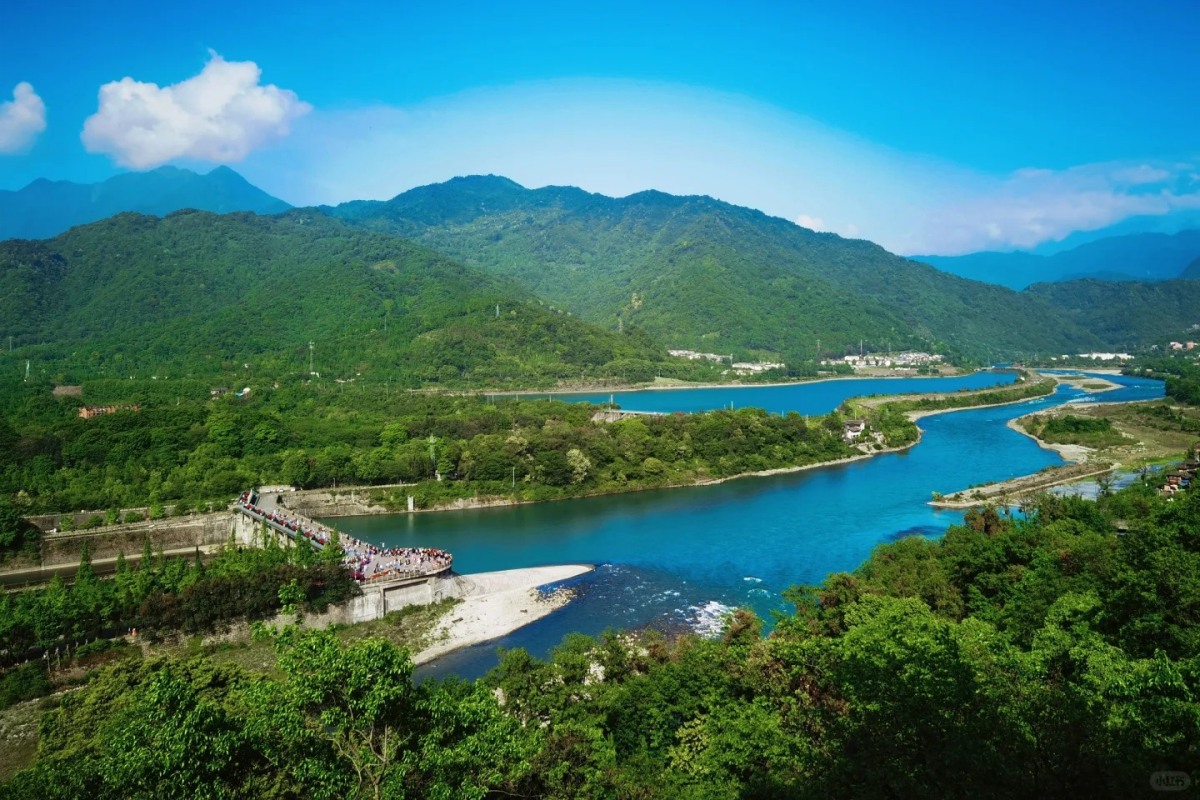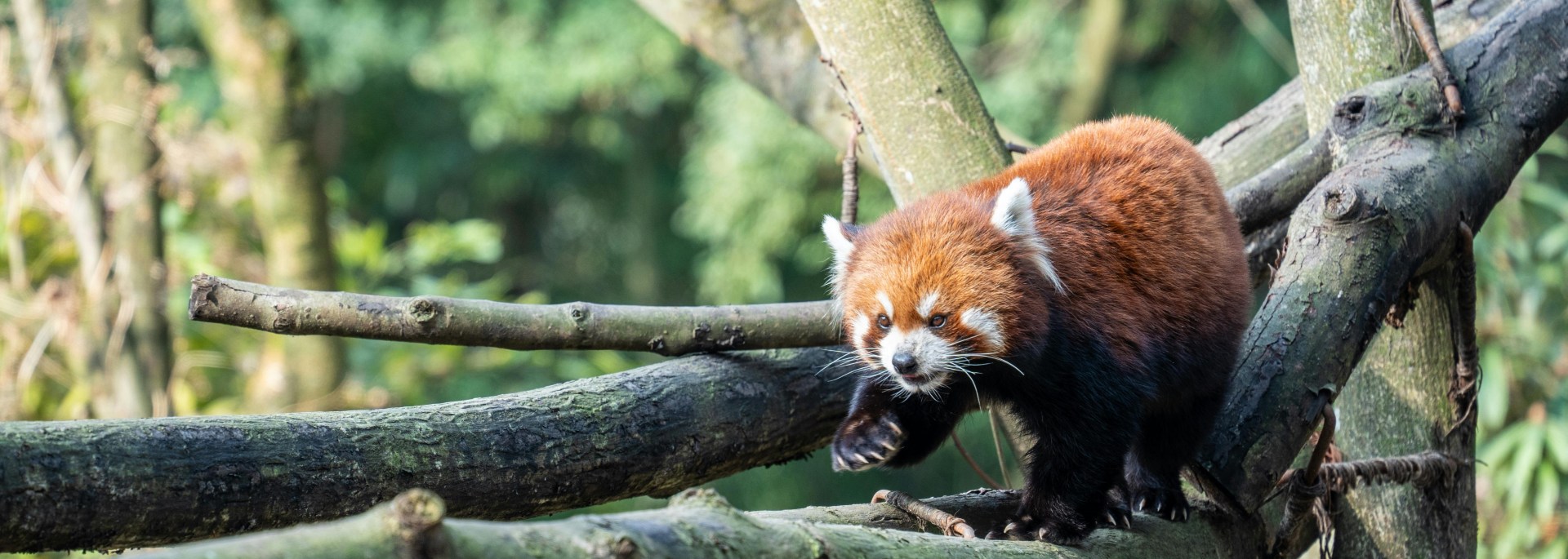
Chengdu Must-see Attractions
By Annie
If you’re planning a trip to China, Chengdu is an absolute must-add to your itinerary. Let’s dive into the ultimate guide to its must-see attractions, peppered with my personal tips to make your Chengdu travel unforgettable!
The Giant Panda Breeding Research Base
Let’s start with the undisputed star: the Chengdu Research Base of Giant Panda Breeding. My number one piece of advice here is to go early – as in, right when they open! Pandas are most active in the morning, usually around 8:30-10:30 AM, especially outside of summer. During summer months, if temperatures rise above 26°C (79°F), the pandas often move indoors to air-conditioned enclosures. An early visit also helps you avoid the thick crowds that gather later in the day.
This sprawling base, located about 10 km north of downtown, is designed to mimic the pandas’ natural habitat, providing a fantastic opportunity to see pandas of all ages. You can observe them eating, playing, and if you’re lucky, even spot adorable cubs.
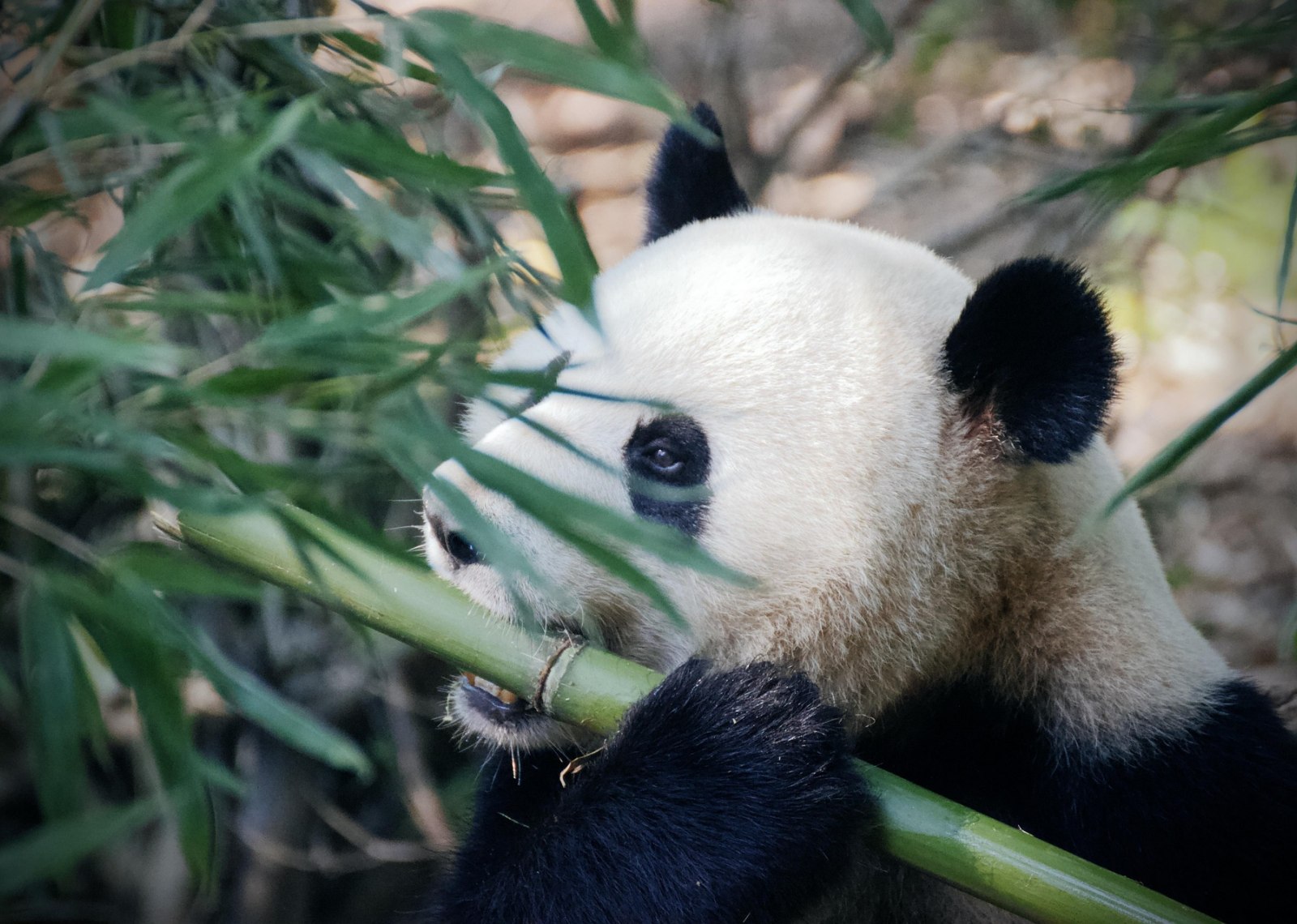
Opening Hours: 7:30 AM – 6:00 PM.
Pro Tip: Enter through the lesser-used South Gate and head straight to the Sunshine Nursery House to see newborn cubs.
Jinli Ancient Street: Step Back in Time (and Taste!)
Just east of the Wuhou Temple, you’ll find Jinli Ancient Street, a place I adore for its vibrant atmosphere and historical charm. This pedestrian street, dating back to the Three Kingdoms period and revitalized in 2004, is a feast for the senses.
It’s lined with traditional architecture, bustling shops selling local handicrafts and souvenirs, and an incredible array of local snacks. This is where you truly get a “taste” of local Chengdu life. From famous Sichuan snacks like rabbit head to various noodles and dumplings, it’s a culinary hotspot.
My personal tip: visit in the evening when the red lanterns cast a magical glow, making for fantastic photos and a lively night market feel. It can get very crowded, especially on weekends and holidays, but the energy is infectious.
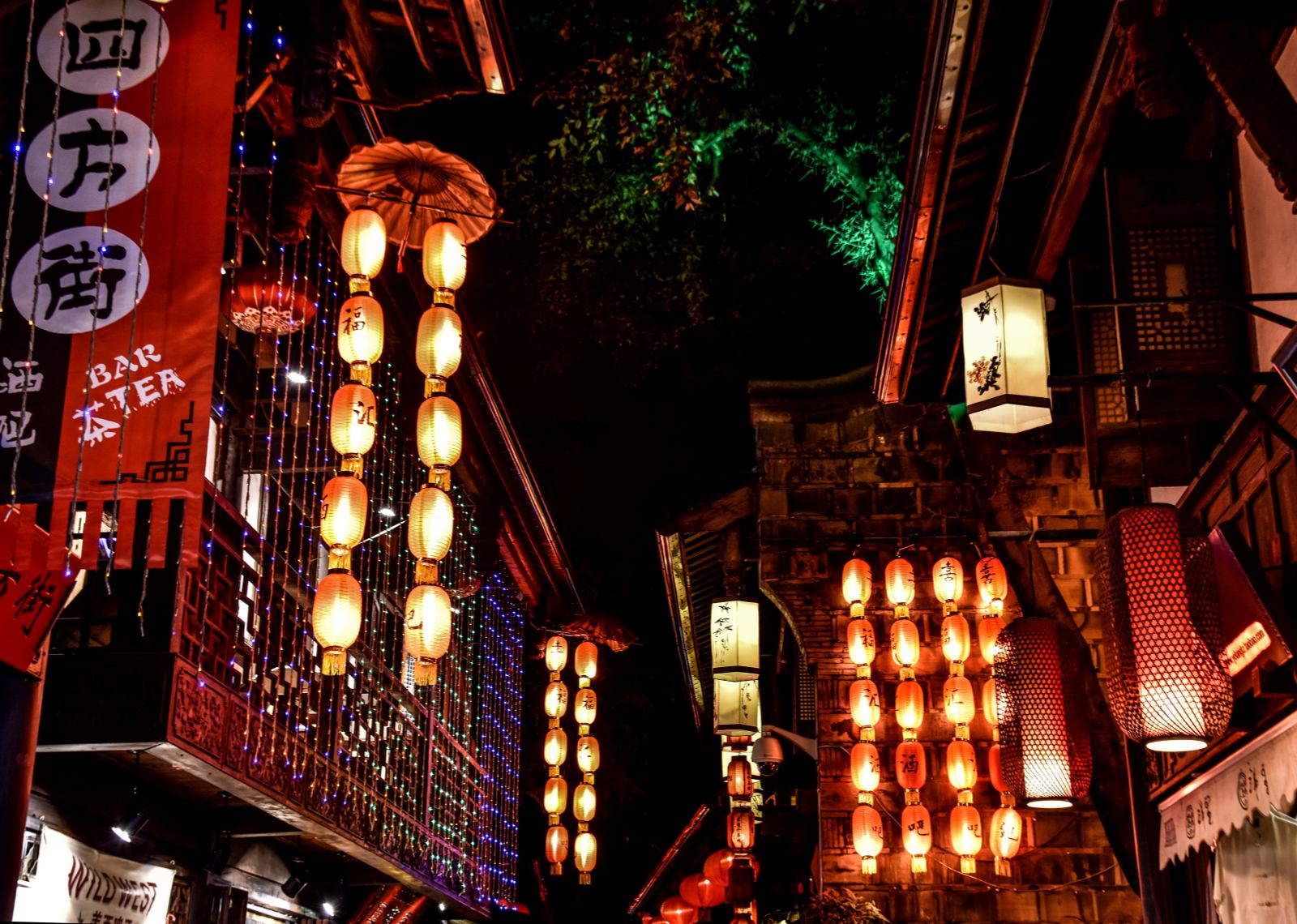
- Sample local snacks like dandan noodles, zhong dumplings, sweet potato jelly, and the famous san da pao sticky rice balls.
- Explore shops for traditional Sichuan handicrafts like Shu embroidery and brocade.
Wuhou Temple: A Glimpse into the Three Kingdoms
Adjacent to Jinli Street is the Wuhou Temple (Wuhou Shrine), a significant historical site dedicated to Zhuge Liang, the renowned military strategist of the Shu Kingdom, and Emperor Liu Bei. Built during the Qing dynasty, this temple complex spans 37,000 square meters and is filled with historical architecture, ancient cypress trees, and statues of key figures from the Shu Kingdom.
For history buffs like me, this is a must-visit. You can explore the five main sections, culminating in the Hall of Zhuge Liang, and admire the collection of inscribed stone tablets, including the famous “Tablet of Triple Success.” It offers a deep dive into a fascinating period of Chinese history.
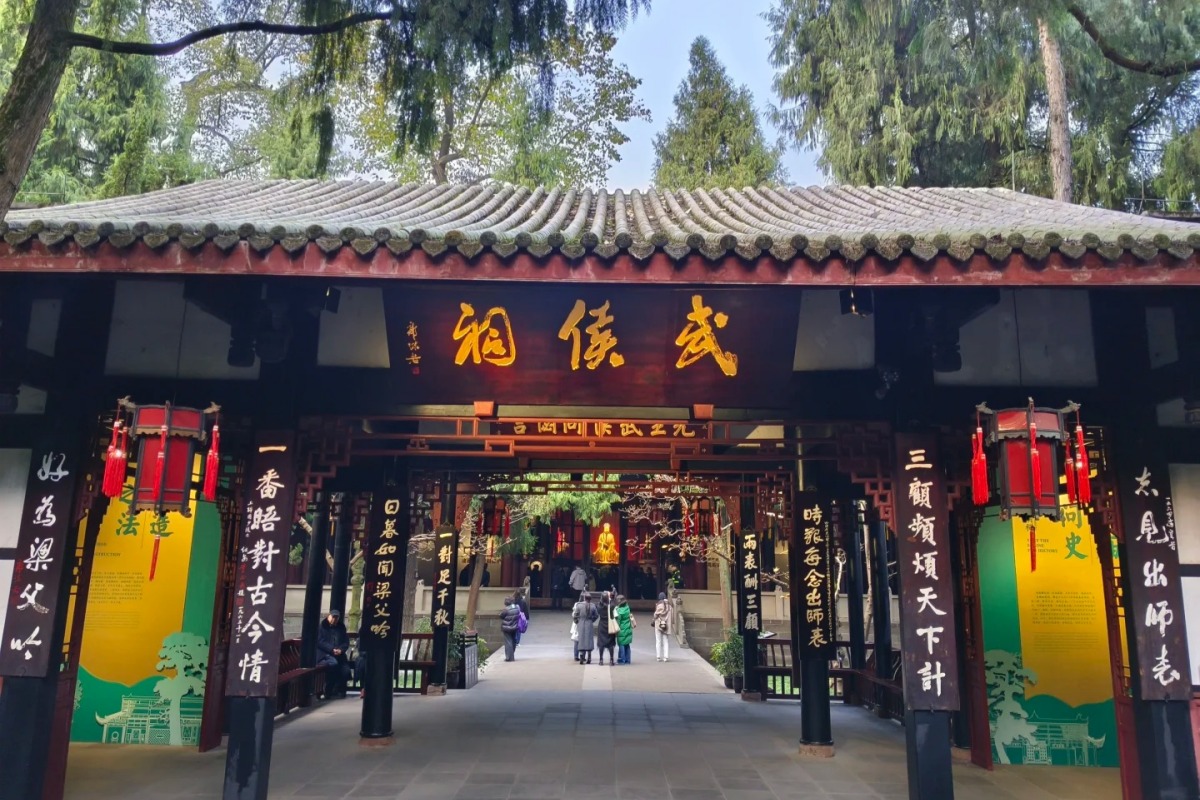
Sichuan Opera: The Magic of Face-Changing
No trip to Chengdu is complete without watching a Sichuan Opera performance. This traditional art form is famous for its unique face-changing technique (bian lian), where performers change masks in the blink of an eye. It’s a truly mesmerizing experience!
I recommend booking second-row seats to fully appreciate the intricate details and avoid getting sprayed during the fire-spitting act. This cultural highlight offers a deeper appreciation for traditional Chinese arts.
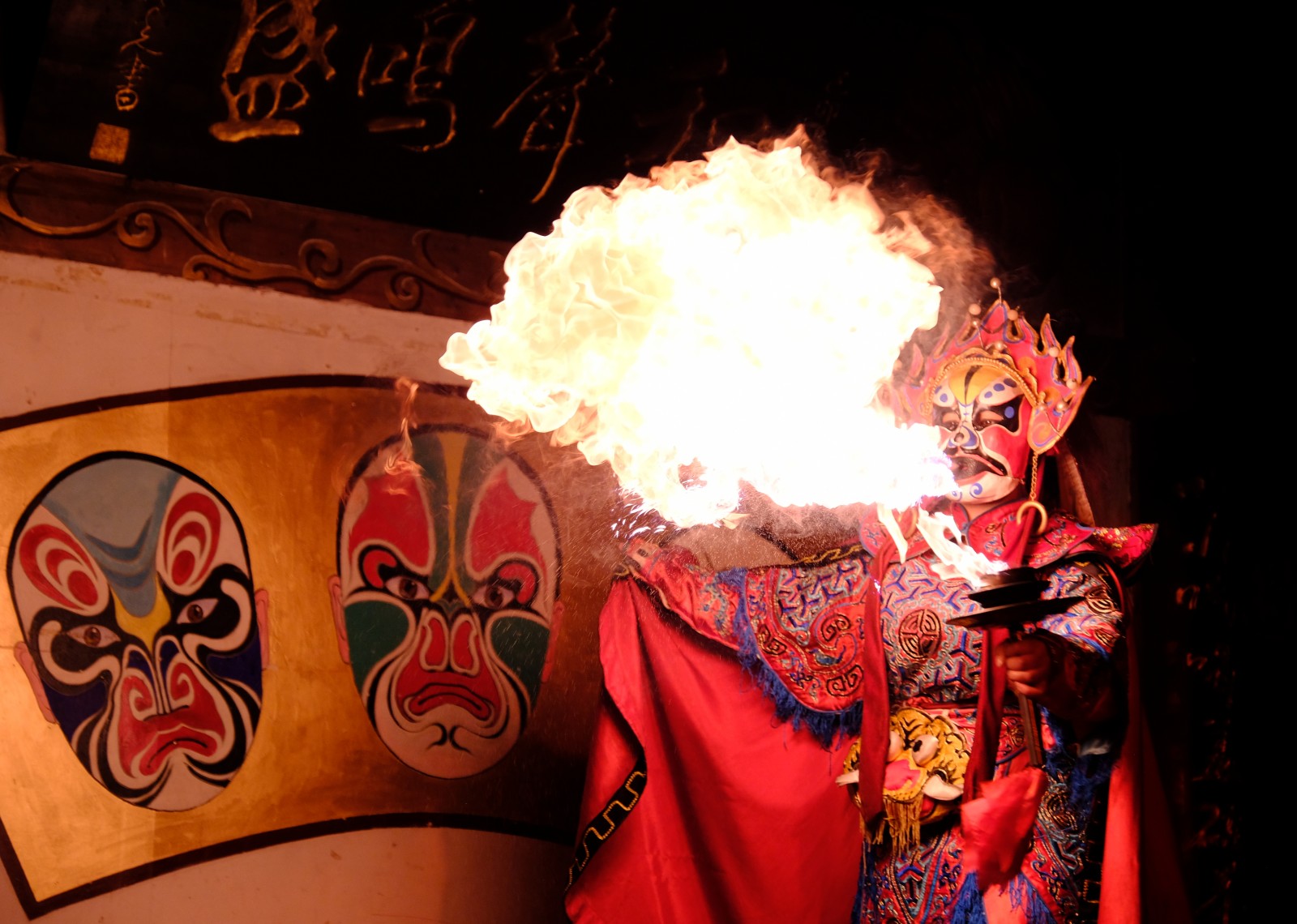
People’s Park: Embrace Chengdu’s Laid-Back Lifestyle
If you want to experience Chengdu’s famously relaxed pace of life, head to People’s Park. This public park is a perfect spot to observe local culture. You’ll see residents sipping tea, dancing, singing, playing mahjong, writing calligraphy, and just generally enjoying life. It’s a true snapshot of Chengdu’s “slow life” spirit.
Don’t miss an authentic tea-drinking experience. You can also row a boat on the lake or simply find a quiet spot to people-watch. It’s a wonderful contrast to the bustling city streets and a great place to unwind.
- Join a tea ceremony.
- Observe locals playing Mahjong or practicing Tai Chi.
- Explore the “matchmaking corner” for a unique cultural insight.
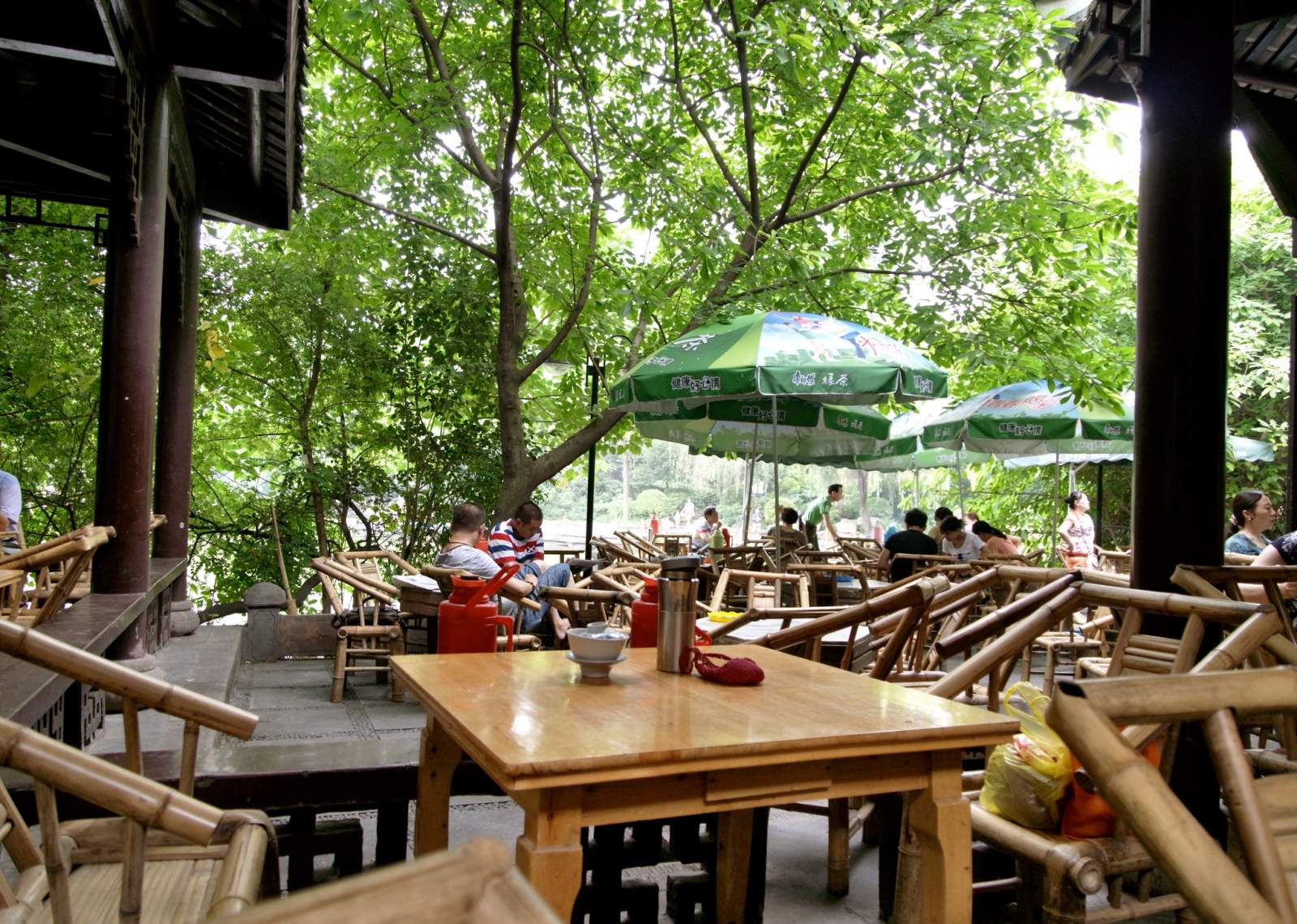
Kuanzhai Alley (Wide and Narrow Alleys)
The Kuanzhai Alley (Wide and Narrow Alleys) is another preserved historical block that beautifully blends the old with the new. These alleys (Kuan Alley, Zhai Alley, and Jin Alley) offer a glimpse into traditional Chengdu architecture.
Here, you’ll find shops selling folk costumes, Shu Embroidery, Shu Brocade, and bamboo products. It’s a fantastic example of how Chengdu preserves its heritage while catering to modern visitors. Strolling through these alleys provides a sense of the city’s past with comfortable, modern amenities.
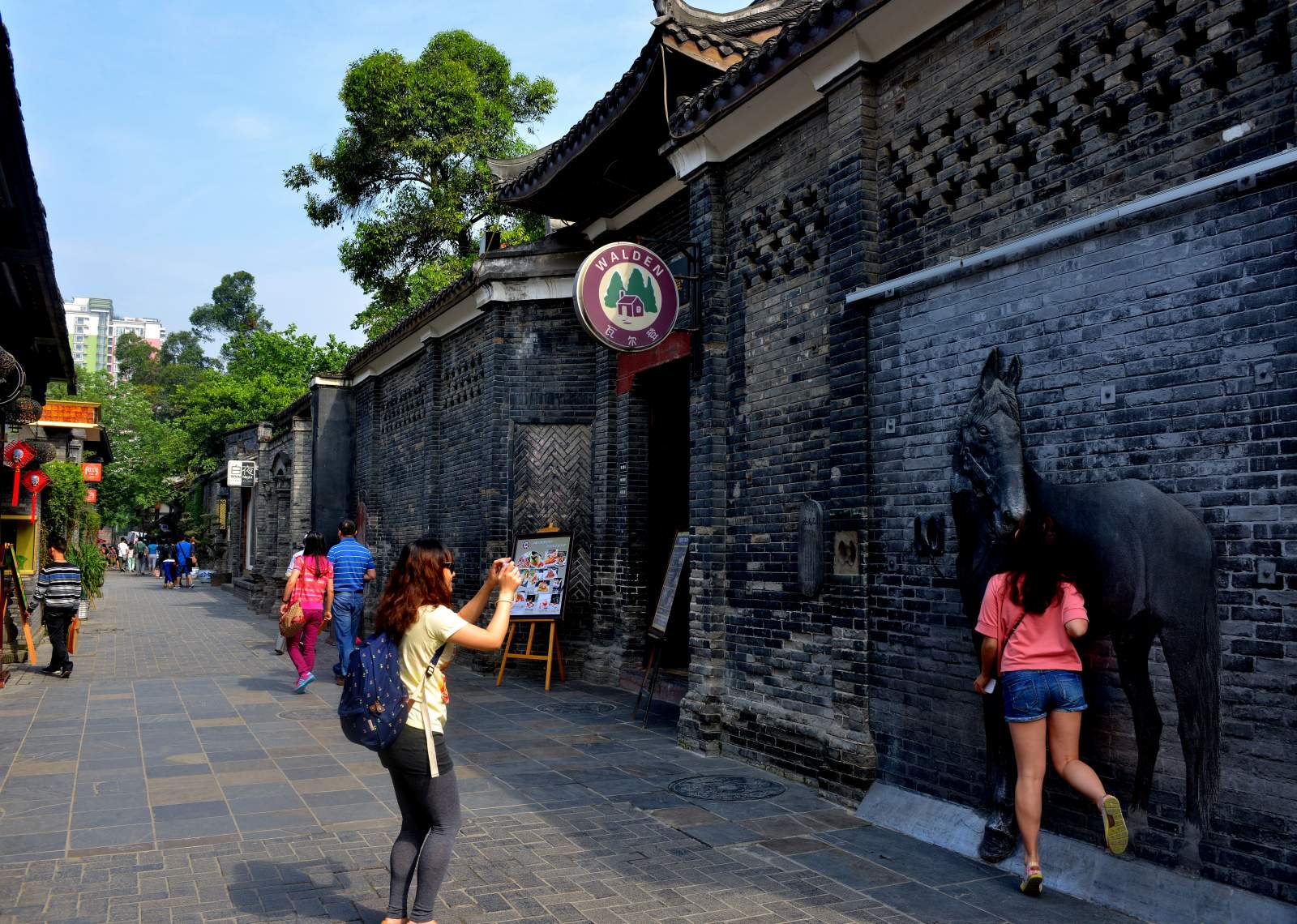
Where Can I go for a Day Trip from Chengdu?
While Chengdu itself has plenty to keep you busy, if you have extra time, consider these excellent day trips:
Leshan Giant Buddha
Leshan Giant Buddha is a UNESCO World Heritage site, about a 2 to 2.5 hours drive from Chengdu, features the world’s largest carved stone Buddha. It’s truly monumental and an awe-inspiring sight. You can take a boat ride to see the Buddha from the river or hike up to its head for a closer look and explore the surrounding temples.
Tips for Visiting Leshan Giant Buddha
- Consider a boat tour for panoramic views of the Buddha.
- Visit early in the morning to avoid the biggest crowds.
- Allocate ample time, especially during peak seasons, due to crowds.
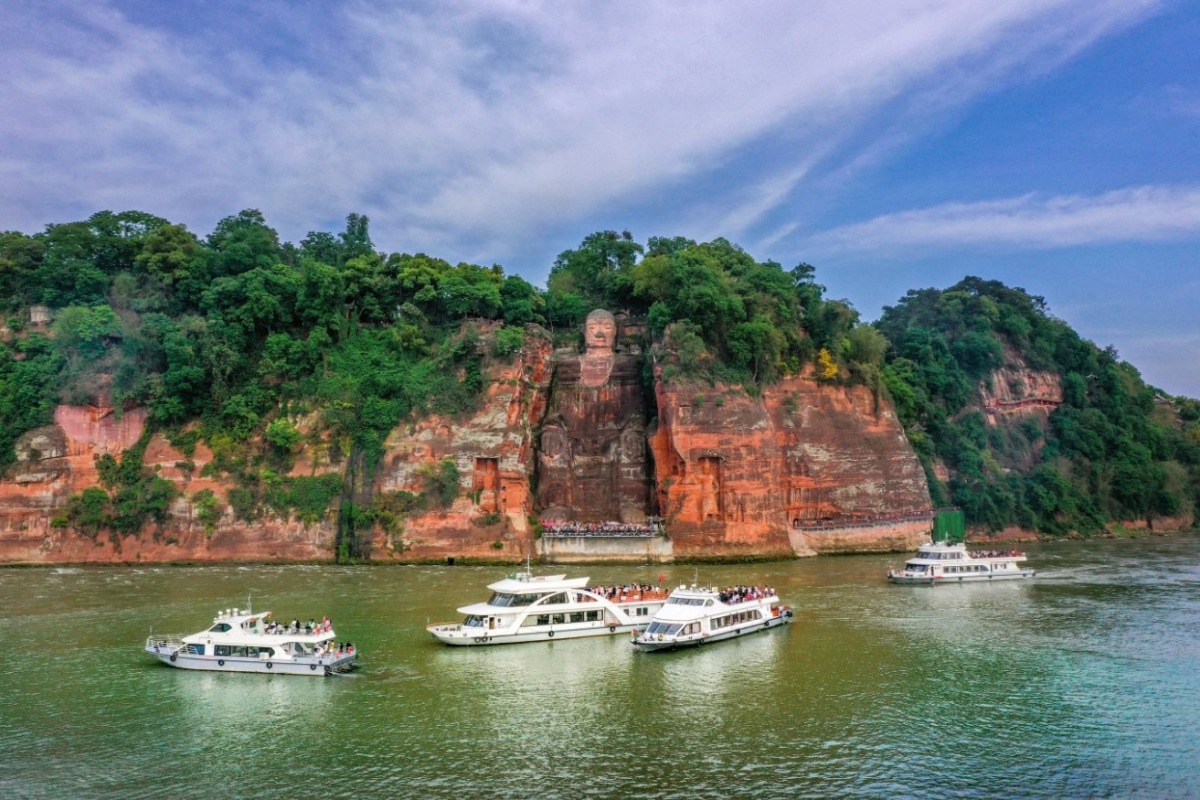
Mount Qingcheng
Mount Qingcheng is about 60 km from Chengdu, this UNESCO site is the birthplace of Taoism, with misty peaks, ancient temples, and hiking trails. I’ve hiked here twice, and it’s my favorite escape from the city buzz – the fresh air and views are rejuvenating. If you’re fit, take the cable car up and hike down for the best experience; it’s not too strenuous.
Practical note: Pack water and wear good shoes – paths can be steep. Best in autumn for fall colors. For Chengdu tours, this pairs well with nearby Dujiangyan Irrigation System, an engineering marvel from 256 BC.
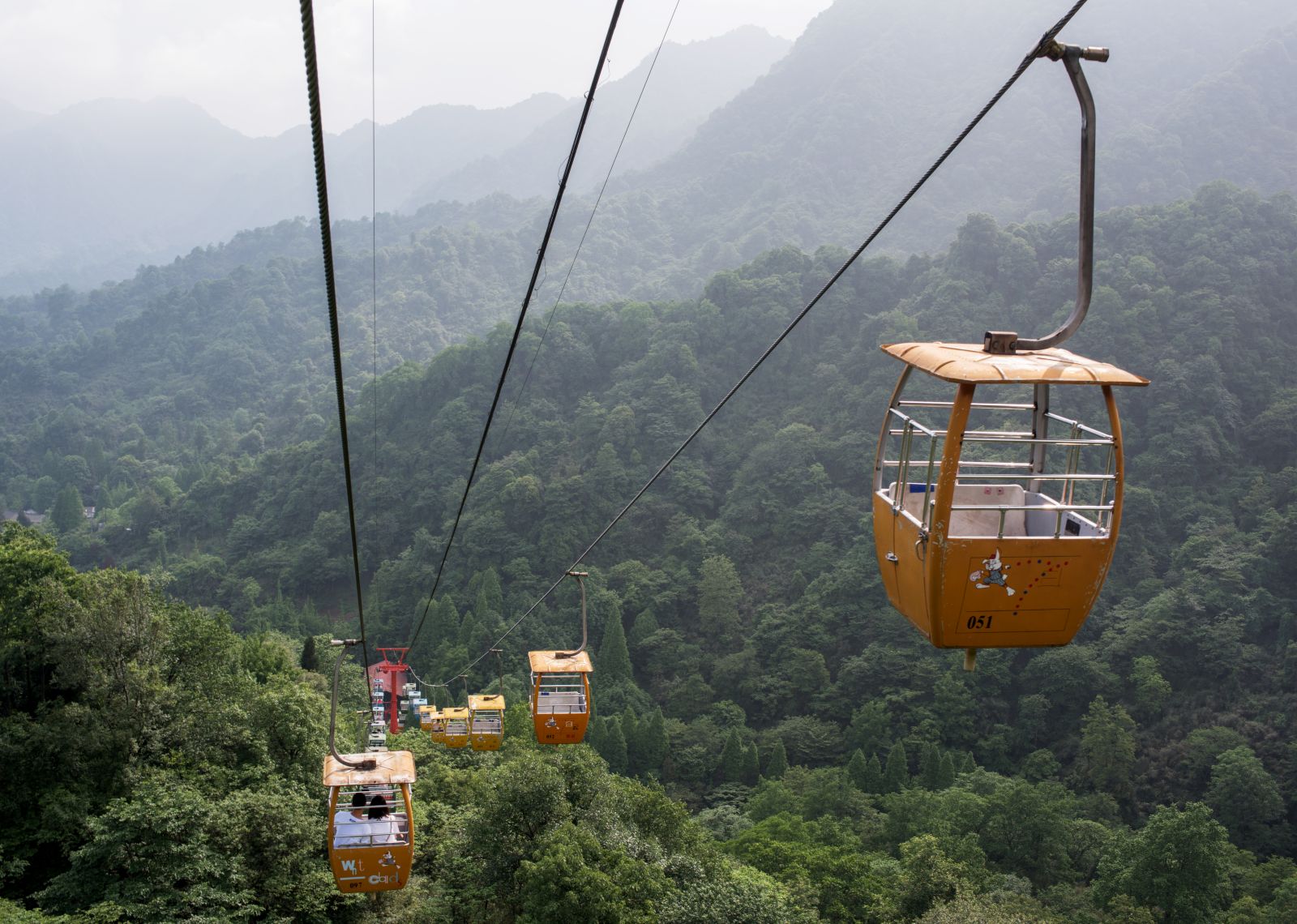
Dujiangyan Irrigation System: Ancient Engineering Marvel
The Dujiangyan Irrigation System is a UNESCO World Heritage Site and one of the world’s oldest irrigation systems. Built over 2,000 years ago, this engineering marvel is still in use today and is a testament to ancient Chinese ingenuity.
You can learn about its history at the on-site museum and explore the beautiful Dujiangyan City nearby. This site is particularly impressive for those interested in ancient technology and sustainable resource management.
